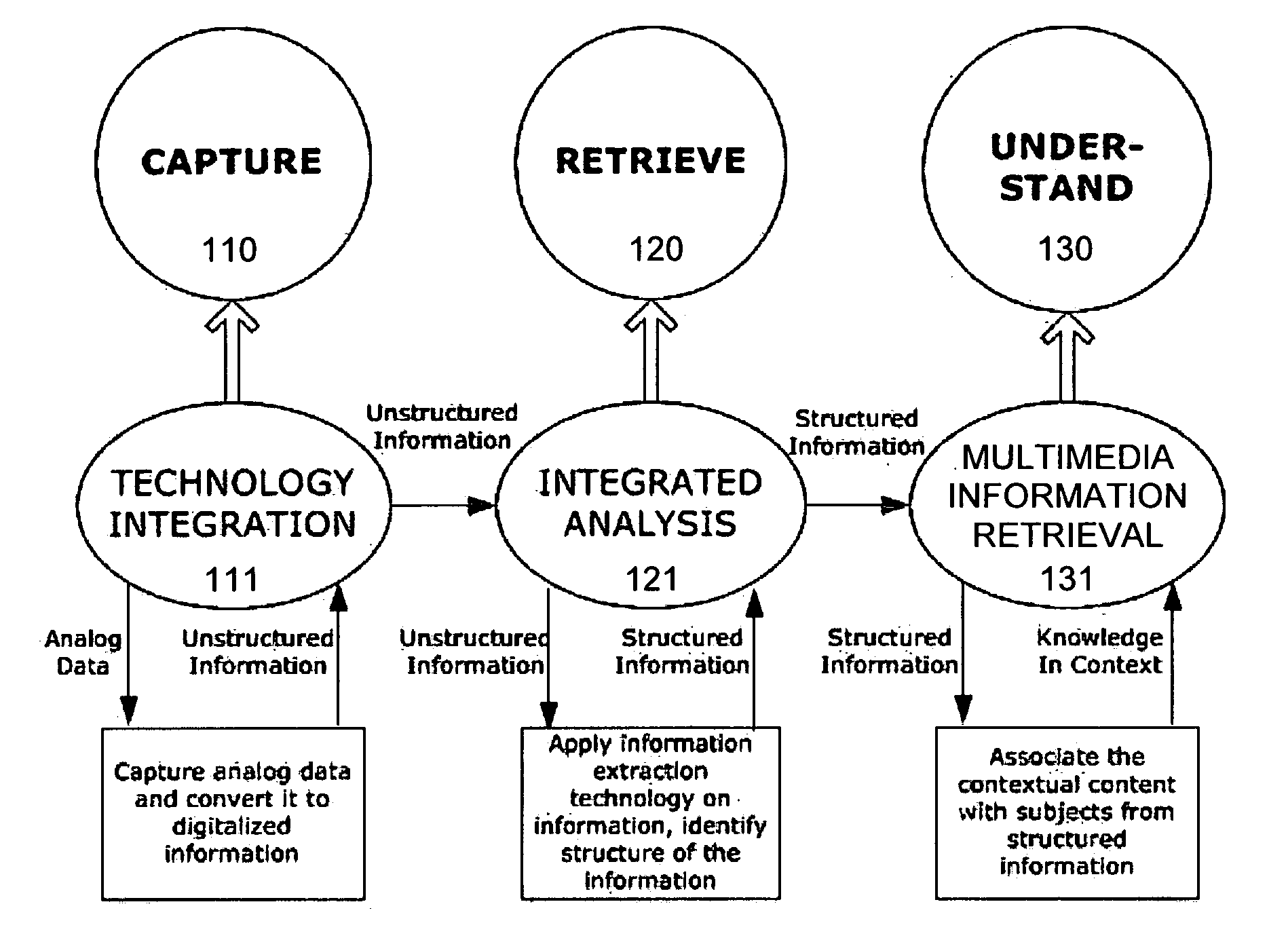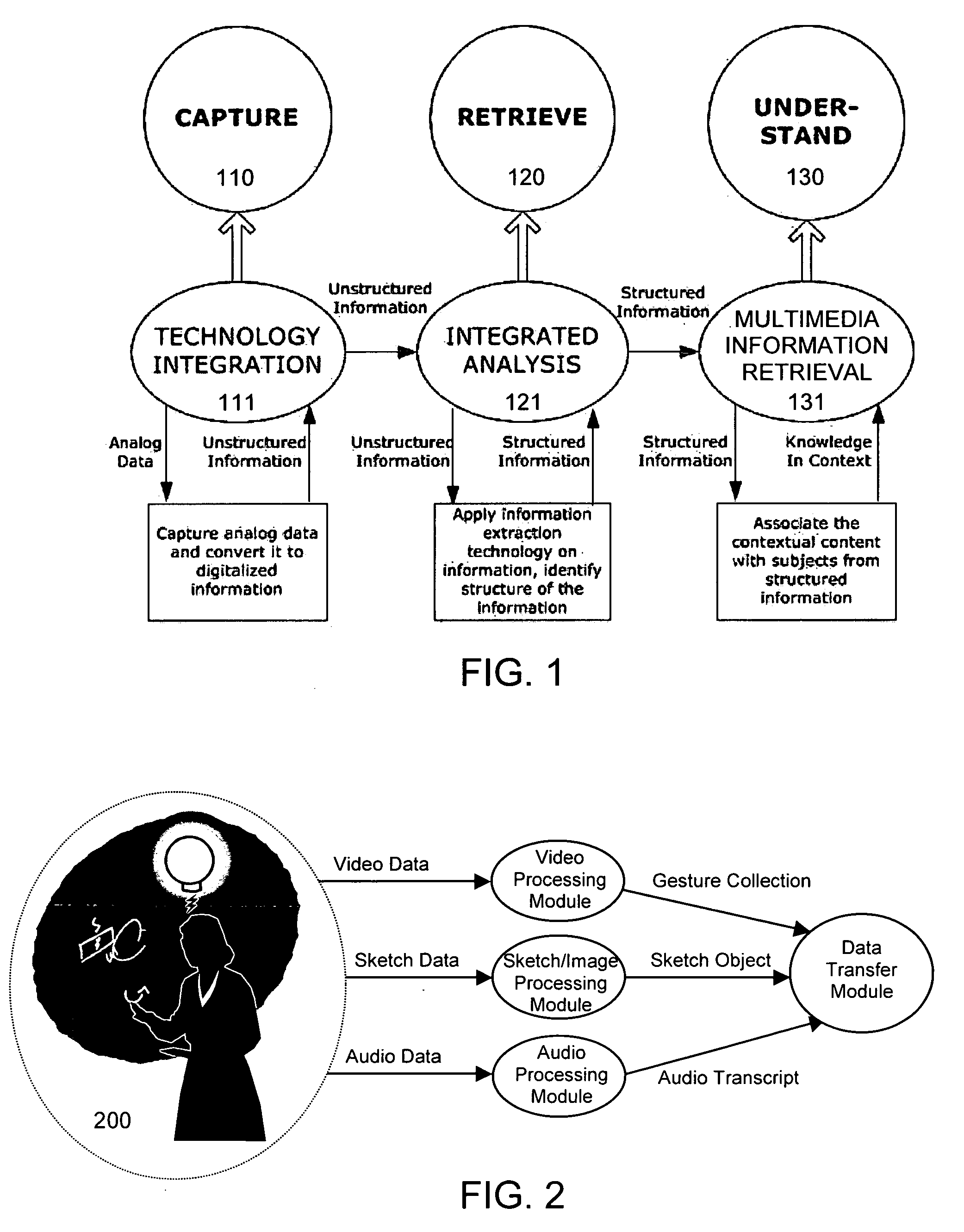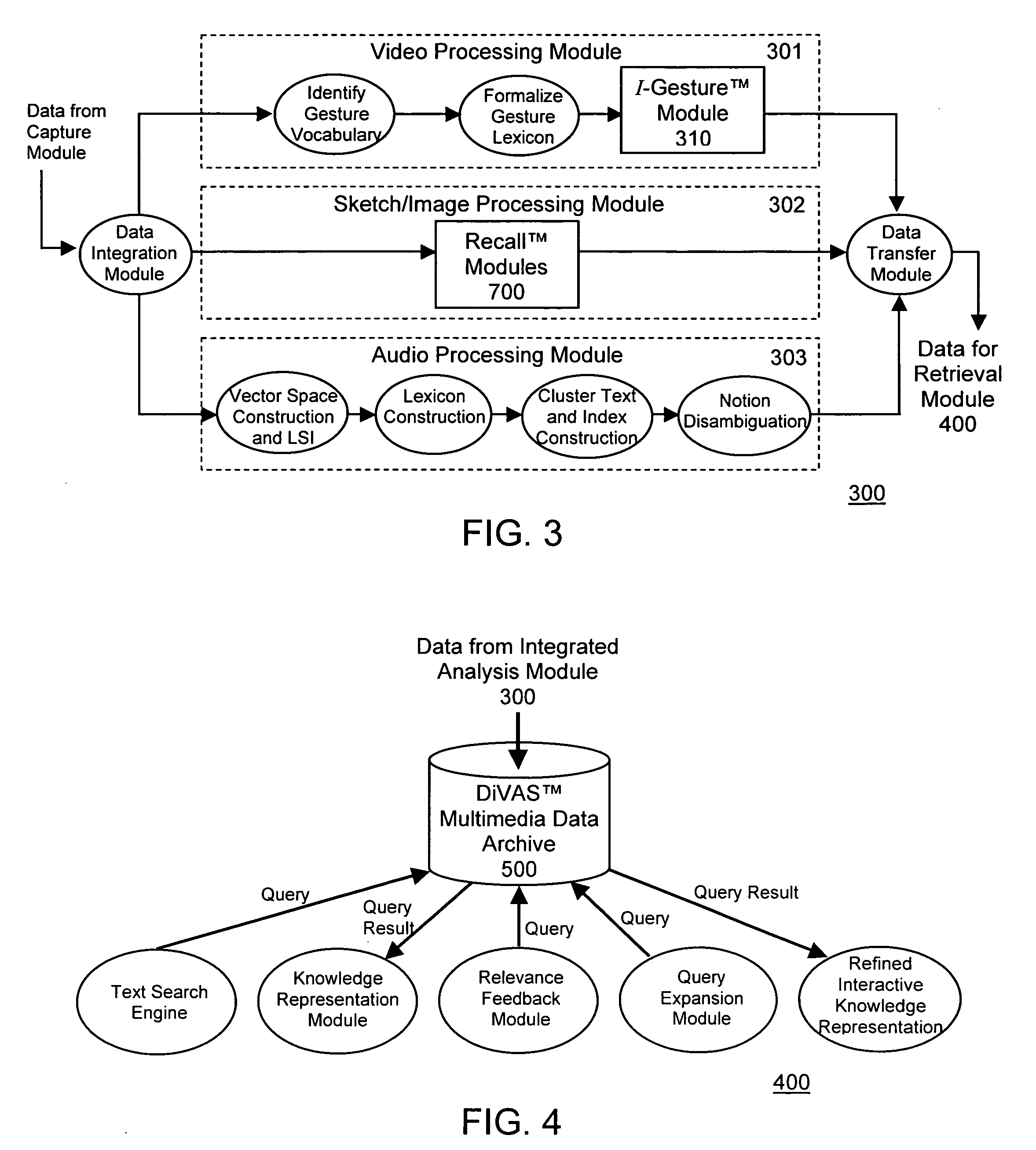DiVAS-a cross-media system for ubiquitous gesture-discourse-sketch knowledge capture and reuse
a gesture-discourse-sketch and knowledge technology, applied in the field of digital video audiosketch (divas) system, can solve the problems of not having viable and reliable mechanisms for finding and retrieving reusable knowledge, unable and the majority of digital content management software today offers few solutions to capitalize on core corporate competen
- Summary
- Abstract
- Description
- Claims
- Application Information
AI Technical Summary
Benefits of technology
Problems solved by technology
Method used
Image
Examples
Embodiment Construction
[0055] We view knowledge reuse as a step in the knowledge life cycle. Knowledge is created, for instance, as designers collaborate on design projects through gestures, verbal discourse, and sketches with pencil and paper. As knowledge and ideas are explored and shared, there is a continuum between gestures, discourse, and sketching during communicative events. The link between gesture-discourse-sketch provides a rich context to express and exchange knowledge. This link becomes critical in the process of knowledge retrieval and reuse to support the user's assessment of the relevance of the retrieved content with respect to the task at hand. That is, for knowledge to be reusable, the user should be able to find and understand the context in which this knowledge was originally created and interact with this rich content, i.e., interlinked gestures, discourse, and sketches.
[0056] Efforts have been made to provide media-specific analysis solutions, e.g., VideoTraces by Reed Stevens of U...
PUM
 Login to View More
Login to View More Abstract
Description
Claims
Application Information
 Login to View More
Login to View More - R&D
- Intellectual Property
- Life Sciences
- Materials
- Tech Scout
- Unparalleled Data Quality
- Higher Quality Content
- 60% Fewer Hallucinations
Browse by: Latest US Patents, China's latest patents, Technical Efficacy Thesaurus, Application Domain, Technology Topic, Popular Technical Reports.
© 2025 PatSnap. All rights reserved.Legal|Privacy policy|Modern Slavery Act Transparency Statement|Sitemap|About US| Contact US: help@patsnap.com



